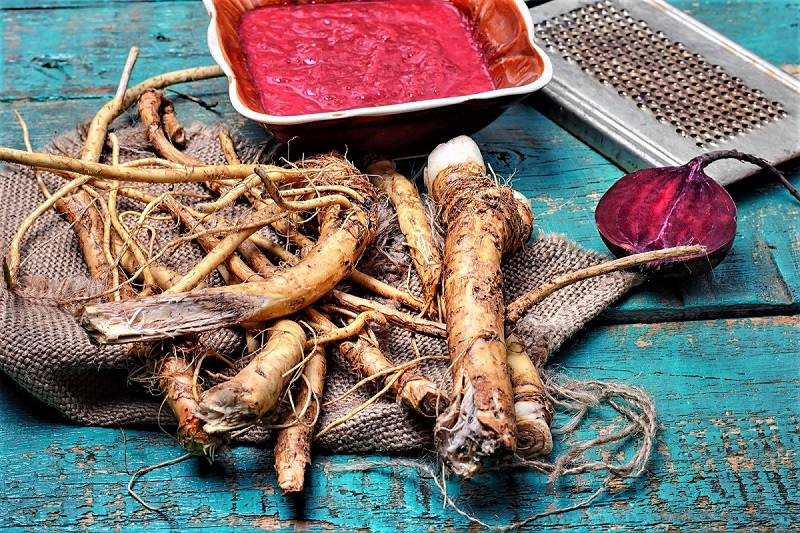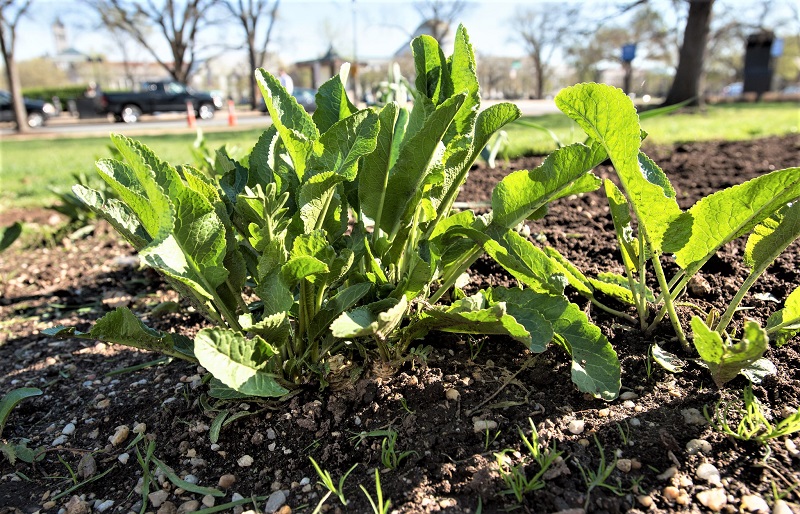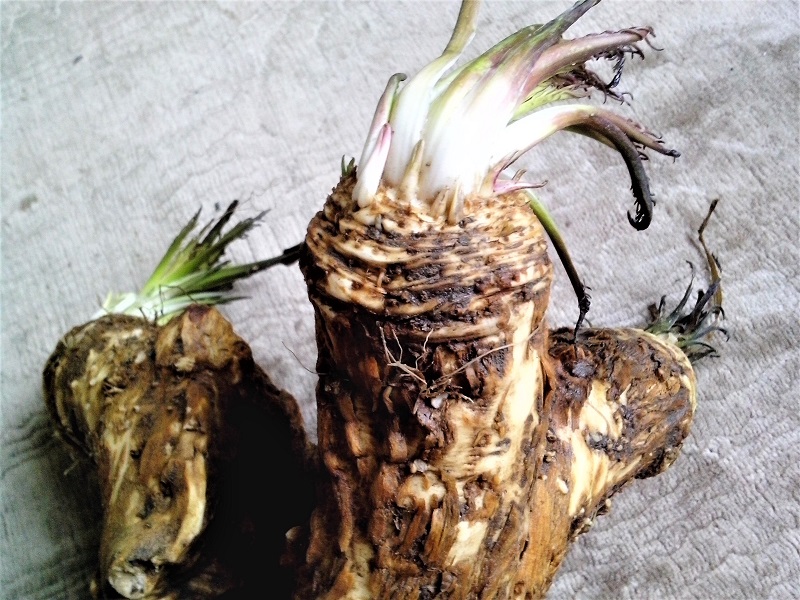We grate it onto coleslaw or use it as a main ingredient in a fiery sauce that traditionally accompanies roast beef. Horseradish is in the brassica family, which includes turnips, mustard greens, kale and many other plants of similar pungency and taste. The plant is a vigorous, hardy perennial that sprouts lush, deep green foliage, but it is grown primarily for its spicy roots.
Native to the temperate regions of Europe and Asia, horseradish is an ancient herb. The Romans introduced it to wider Europe as a medicinal herb and flavoring. It was cultivated in Egypt before the exodus of Hebrew slaves in 1500 B.C., and is the symbolic bitter herb of the Passover Seder.

Growing Your Own Horseradish
Contents
Homegrown horseradish has a clear, fresh taste and packs a more vigorous punch than the horseradish you buy from the supermarket. Experienced gardeners also agree that it is among the easiest edible plants you can grow because it thrives in almost any condition.
You can choose from two widely available types: common horseradish, which has broad, wrinkled leaves; and Bohemian, which has narrower, smoother leaves.
Horseradish flourishes in full sun but will tolerate some light shade. You can grow the herb from seed – if you can find some. Horseradish seeds are notoriously difficult to procure. The easiest way is to start a horseradish crop is from root cuttings. Simply cut off the top half of the horseradish root for use in the kitchen and set aside the bottom section for planting.
Your cutting should have a thick, flat top to signify the top of the mother root. Cut the bottom end on a slant, to indicate the bottom half of the original root. Horseradish is best planted outdoors in the garden in spring or fall.

How to Plant Horseradish Root Cuttings
Prepare the planting site by working compost 12 inches deep into the soil. Some experts recommend further enriching the soil with two ounces of granular 16-16-8 fertilizer per square yard of planting area. Plant the root cutting at a 45-degree angle, with the top of the cutting 2 inches below the soil line.
One plant will usually suffice for a family. If you intend to plant more, make sure your plants are at least 30 inches apart.

(Photo: USDA/Flickr)
Care and Maintenance
The horseradish is a tough, hardy plant and will flourish with little care and maintenance on the part of the gardener. Simply snip off any damaged leaves to prevent an untidy appearance. The plant will endure a drought, but its roots might turn woody when allowed to go without water for too long.
If no rain is forthcoming, give the plants about one or two inches of water once a week. Do not overwater the plant else the roots will turn soft and bitter.
Keep the planting area free of weeds and keep plucking off any brown leaves. When the plants are about 8 inches tall, use a knife to cut away the suckers, leaving only three or four at the center of the crown. This will induce the plant to grow stouter roots.

Harvesting Horseradish
You can begin harvesting horseradish one year after planting. Carefully dig away the soil around the plant to free the side roots and remove them all at the same time. For more flavorful yields, experts from Oregon State University recommend harvesting horseradish after frost kills its foliage.
Scrub the main root under running water and dry well. Horseradish is best consumed fresh, but you can also store the root for later use in the kitchen. Kept in a perforated plastic bag, the root will keep in the vegetable bin of your refrigerator for three months or even longer.








